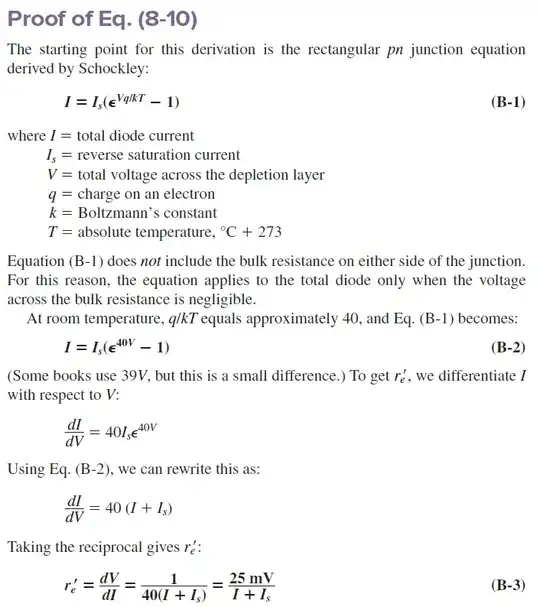I know what thermal voltage is and what it does to the semiconductor, ie. it's the agitated electrons producing electric fields proportional to the absolute temperature. But, like the "r'e", the emitter resistance, its equation is thermal voltage over collector current. But doesn't it add when AC voltage is applied? If I'm applying 20 mV, shouldn't it be 20 mV + 26 mV? (maybe it's a vectorial sum) If it's taught 26mV/Ic, it should be it, I just need to understand why this is the only voltage considered, even with AC signal. Thanks in advance.
Asked
Active
Viewed 102 times
1 Answers
0
I found the answer, and it really is what @jonk posted in the comments, it's the derivative of V(I). When I saw this I promptly remembered I saw the appendix on Malvino (bibliography of electronics course) something very similar. So I went there again to recheck and now it's very clear and meaningful. There's also the great trick to reuse equation B-2.
Image taken from Malvino and Bates, 8th edition Appendix B.
Ruvian de Césaro
- 61
- 3

Tony, yes, I'm aware of it.
– Ruvian de Césaro Aug 29 '20 at 18:47